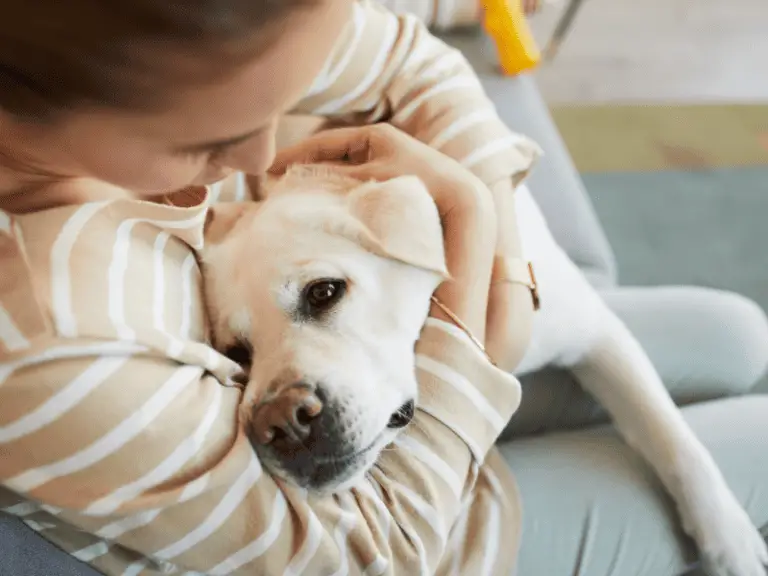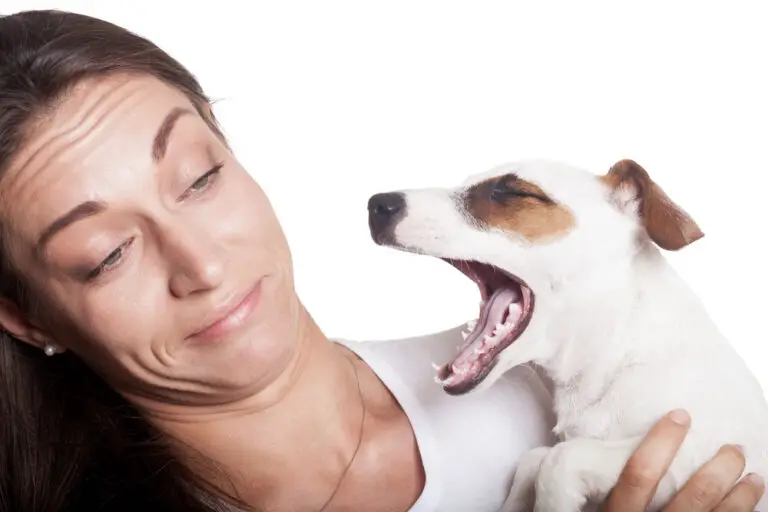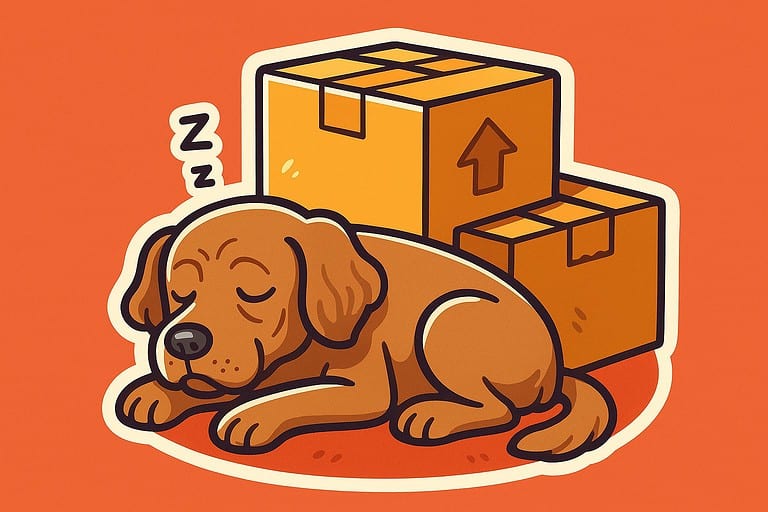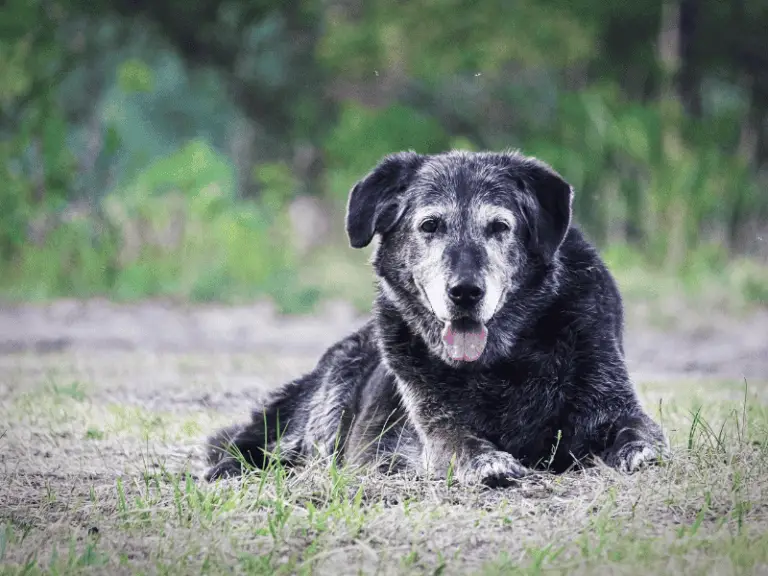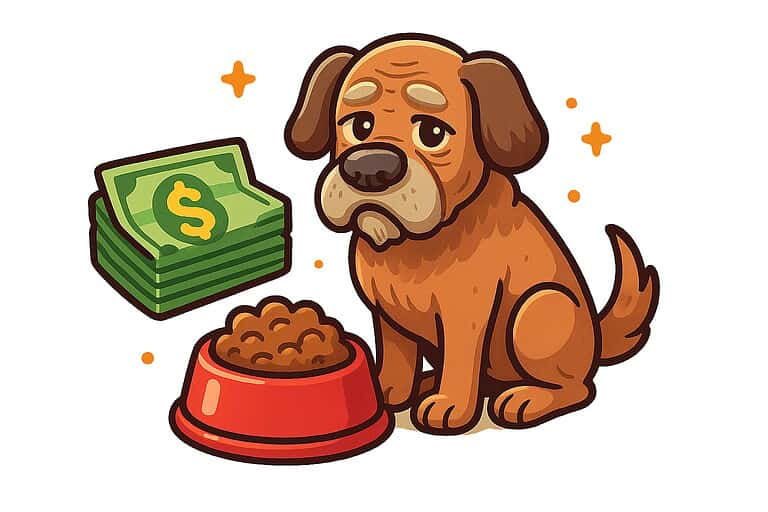Step by Step: How to Check Your Dog’s Pulse at Home

As your dog gets older, keeping an eye on their health matters more than ever. Maybe your senior pup isn’t as bouncy as before, or maybe you’re just trying to stay on top of things.
Learning to check your senior dog’s pulse at home is surprisingly easy and can help you catch heart issues early. You don’t need any fancy equipment or a vet degree for this. Just your fingers and a little patience.
With a bit of practice, you’ll find and count your dog’s heartbeat in just a few minutes. This skill’s extra handy for older dogs, since they’re more likely to develop heart problems as they age.
Once you know what’s normal for your dog, checking their pulse becomes a quick, simple routine. You’ll learn what you need, where to feel for a pulse, and what those numbers actually mean for your dog’s health.
Why Monitoring Your Senior Dog’s Pulse is important
Checking your older dog’s pulse gives you a window into their heart health. It helps you spot problems before they get serious.
Your dog’s heart isn’t the same as it was when they were young. Knowing their baseline lets you notice when something’s off.
Spotting Early Signs of Health Problems
Heart disease creeps up on a lot of senior dogs—up to 80% of dogs over 16, believe it or not. That’s a big number, but the upside is that many heart issues take time to develop.
When you check your dog’s pulse regularly, you get used to their normal rhythm. If your 12-year-old Golden usually has a steady, strong pulse at rest and suddenly it’s racing or feels faint, that’s a red flag.
Keep an eye out for:
- Pulse that’s much faster or slower than normal
- Irregular rhythm or skipped beats
- Very weak pulse that’s tricky to find
- Pulse that stays high even when your dog is calm
Your dog might not show signs like coughing or panting yet, but their pulse can tip you off early. It’s a bit like checking the oil in your car—catching issues before you’re stuck on the side of the road.
When to Check a Pulse Versus Calling the Vet
Sometimes you need to skip the pulse check and call the vet right away. If your dog collapses, struggles to breathe, or their gums look blue or white, forget the pulse—get to the emergency vet.
Check the pulse first if your dog:
- Seems extra tired on walks
- Pants more than usual while resting
- Acts restless or can’t settle down
- Has been coughing off and on
Call your vet ASAP if you find:
- No pulse at all
- Heart rate over 180 beats per minute while resting
- Heart rate under 50 beats per minute
- Very irregular rhythm with long pauses
Even if everything feels normal, that’s still useful info for your vet. You can say, „Hey, my dog’s heart rate was steady at 90 bpm despite some weird symptoms.“ That helps your vet figure out next steps.
Understanding Age-Related Changes in Heart Rate
Your senior dog’s heart just doesn’t work like it used to. As dogs age, their hearts can slow down or get a bit less efficient.
A young, healthy dog might rest at 70-120 beats per minute. Your 10-year-old could be closer to 80-100, and that’s perfectly fine for them.
As dogs age:
- Heart muscle might get thicker or stiffer
- Blood vessels lose some flexibility
- The heart’s electrical signals can get a little wonky
- Recovery after exercise takes longer
Maybe your Labrador had a heart rate of 75 at age five, and now it’s 85 at age eleven. That’s probably just their new normal.
The real trick is watching for trends. If your dog’s pulse sits at 85 for months and suddenly jumps to 120, that’s a bigger deal than the number itself.
Keep a simple log of your dog’s pulse. Jot down the date, time, and heart rate. Note if they just exercised or were napping. This record helps your vet see the bigger picture when something changes.
What You Need Before Checking Your Old Dog’s Pulse
Getting ready to check your senior dog’s pulse is all about timing and comfort. Make things relaxed for both of you.
Choosing the Right Time and Place
Pick a time when your dog is naturally calm. Maybe after a quiet walk or during their afternoon nap. Avoid checking right after meals, exercise, or when they’re worked up.
Find a quiet spot where your dog feels safe. The couch or their favorite bed works. Turn off distractions like the TV and ask folks to keep things quiet.
Best times to check:
- After your dog has rested for 10-15 minutes
- Before meals, when they’re calm but awake
- During their usual chill-out times
A rested heart rate gives you the best baseline for future checks.
Comfort Items to Help Your Dog Relax
Grab your dog’s favorite blanket or bed before you start. If they have a comfort toy, keep it close. Familiar things help keep your dog relaxed.
A few small treats can work wonders as rewards. You don’t need a lot—just a couple of tasty bites.
Gather:
- Their usual blanket or cushion
- A favorite toy
- A few treats for positive reinforcement
- A non-slip mat if you’re on a slick floor
If your dog gets nervous with handling, practice gentle touches around their chest and legs for a few days before you try a real pulse check.
Step by Step: How to Check Your Dog’s Pulse at Home
Checking your senior dog’s pulse is mostly about finding the right spot and counting heartbeats for a set time. You’ll want to know where to feel, how to count, and how to keep track of what you find.
Locating the Best Pulse Points on a Senior Dog
The easiest spot is inside the hind leg, where the leg meets the body—right in the groin. That’s the femoral artery.
Gently place two or three fingers on that spot. You should feel a soft thumping. Skip your thumb; it has its own pulse and can throw you off.
Can’t feel anything? Move your fingers a bit higher or lower. Sometimes the pulse point is just a little off from where you expect. Press firmly enough to feel the beat, but not so hard you block it.
Other spots to try:
- Inside the front leg at the elbow
- On the chest behind the front leg
- Under the tail where it meets the body
Senior dogs can have weaker pulses, so take your time. If you’re calm, your dog will be too.
Counting the Heartbeats Accurately
Once you find the pulse, it’s time to count. Start when your timer hits zero. Count each beat: „one, two, three…“
Counting for a full 60 seconds is most accurate. If your dog gets fidgety, count for 15 seconds and multiply by four.
Your options:
- 60 seconds: Most accurate, just use the number you get
- 30 seconds: Multiply by 2
- 15 seconds: Multiply by 4
Keep your pace steady. If you lose track, just start over. It’s better to take an extra minute than to get a wrong number.
Make sure your dog is calm before counting. Excitement or stress can spike their heart rate.
Timing Methods: Stopwatch, Clock, or App
You’ll need a way to time yourself. Your phone’s stopwatch is perfect for this. Most phones have a built-in timer that’s easy to use one-handed.
A wristwatch with a second hand works too. Start when the hand hits 12, and stop when it comes around again.
Good timing tools:
- Phone stopwatch apps
- Kitchen timers with big displays
- Watches with second hands
- Fitness tracker timers
If you have a helper, let them handle the timing while you focus on the pulse. That can make things smoother, especially if your dog gets wiggly.
Set up your timer before you touch your dog. Being ready helps keep things calm for both of you.
How to Record and Track Results
Write down your dog’s pulse rate right away. Note the date, time, and what your dog was doing before the check. This helps you spot patterns over time.
Jot down:
- Date and time
- Heart rate
- What your dog was doing before the check
- Any odd behavior
- Temperature if your dog seems off
| Date | Time | Heart Rate | Activity | Notes |
|---|---|---|---|---|
| 8/21/25 | 9:00 AM | 78 bpm | Resting | Normal |
| 8/22/25 | 6:00 PM | 95 bpm | After walk | Slightly high |
Normal heart rates for senior dogs usually fall between 60-100 beats per minute at rest. Smaller dogs tend to have faster heart rates than big breeds.
Ask your vet what’s normal for your dog. They’ll help you know when a change means it’s time for a checkup.
What’s Normal? Understanding Senior Dog Pulse Rates
As your dog gets older, their heart rate shifts a bit, and knowing their normal range helps you catch problems early. Senior dogs have slightly different pulse rates than younger ones, and a few things can change those numbers day to day.
Average Pulse Rates for Older Dogs
Your dog’s normal pulse depends more on their size than their age. Large senior dogs usually have heart rates of 60 to 100 beats per minute—pretty similar to their adult years.
Small and medium seniors often have rates of 100 to 140 beats per minute. It’s normal if your little dog’s heart beats faster than your friend’s big Shepherd.
Here’s a quick look:
| Dog Size | Normal Pulse Rate |
|---|---|
| Large breeds (over 30 lbs) | 60-100 BPM |
| Small/Medium breeds (<30 lbs) | 100-140 BPM |
If your dog’s resting pulse is always outside these ranges, mention it to your vet. But don’t stress—these are just guidelines.
Factors That Affect an Elderly Dog’s Pulse
Your senior dog’s pulse jumps around depending on what’s going on inside. Temperature matters—a fever means a faster pulse.
Medications can change the heart rate too. Some heart meds slow things down, others speed them up. Always ask your vet about side effects.
Health conditions like heart disease, thyroid issues, or pain from arthritis can all mess with pulse rates. If you notice a big change from your dog’s usual pattern, that’s worth sharing with your vet.
Time of day is another factor. Your dog’s heart rate is lowest when they’re sleeping and highest when they’re active.
How Stress or Excitement Influence Heart Rate
Ever notice your dog’s heart racing when the doorbell rings or you grab the leash? That’s totally normal, even for seniors.
Excitement can double their heart rate. A calm 80 bpm can shoot up to 160 in a flash. It should settle back down within a few minutes.
Stress and anxiety do the same thing. Vet visits, thunderstorms, or any big change can send your dog’s pulse up. The key is how quickly it returns to normal.
For the truest reading, check your dog’s pulse when they’re truly relaxed. Early morning before breakfast or during an afternoon nap is usually best.
If their heart rate stays high for more than 10-15 minutes after excitement, or shoots up for no clear reason, that’s when it’s time to call your vet.
Troubleshooting: What If You Can’t Find a Pulse?
Can’t find your dog’s pulse on the first try? Don’t worry—it happens to just about everyone. Sometimes a small adjustment in position or technique is all you need. If you ever feel unsure or your dog seems unwell, don’t hesitate to reach out to your vet.
Common Obstacles and Simple Fixes
Your dog won’t stay still during the pulse check. Try asking someone to gently hold your dog or offer a favorite treat as a distraction.
You might have better luck checking the pulse while your dog is lying down and relaxed. Sometimes, that makes all the difference.
You’re pressing too hard on the femoral artery. Use just light pressure with your fingertips.
Pressing too firmly can block the pulse you’re trying to find. It’s a common mistake, so don’t worry if it happens.
Your dog has thick fur covering the pulse point. Part the fur carefully or feel through it with gentle pressure.
If you’re still struggling, try wetting your fingers a bit. That little trick can make it easier to feel the pulse.
You’re looking in the wrong spot. The femoral artery runs along the inside of the rear leg at mid-thigh.
If you can’t find it there, move your fingers up or down slightly along the inner thigh. Sometimes it’s just a matter of a half-inch.
Your dog is overweight. Extra padding can make the pulse harder to detect.
Try applying a bit more pressure than usual, but keep it gentle. It’s a balancing act.
Signs You Should Stop and Seek Immediate Help
Your dog is unconscious or extremely weak. Don’t spend time searching for a pulse—get to the emergency vet right away.
Your dog’s gums are pale, blue, or white. This signals poor circulation or oxygen trouble and needs instant veterinary attention.
Your dog is having trouble breathing or panting heavily while at rest. These are emergencies that require professional help now.
Your dog seems to be in pain when you touch the pulse area. Stop and contact your vet, since this could mean injury or a circulation problem.
If you suspect your dog’s heart isn’t beating normally, trust your gut and get help. Don’t keep searching for a pulse if something feels wrong.
Tips for Making Pulse Checks a Stress-Free Routine
Making pulse checks easy for your senior dog takes patience and the right approach. Use treats, pay attention to your dog’s mood, and turn it into quality time together.
Involving Treats, Praise, and Gentle Touch
Start by connecting pulse checks with good things. Give your dog a special treat before you even touch their chest or leg.
This helps them link the experience with something positive. Keep treats nearby during every pulse check.
High-value rewards like tiny bits of chicken or cheese work best. Don’t wait until after—reward your dog while you’re touching them.
Use a calm, happy voice throughout. Say things like „good dog“ or „you’re doing great“ while you feel for their pulse.
Your tone tells your dog everything’s okay. Start with gentle touches in areas your dog already likes.
Pet their chest softly before moving to pulse points. Many dogs enjoy chest rubs, so it feels natural.
If your dog pulls away, stop and try again later. Never force it.
Some dogs need a few short sessions before they get comfortable. Practice touching pulse points when your dog is relaxed and happy.
Do this during regular petting so it feels normal. It might take a few tries, but that’s okay.
How to Read Your Dog’s Mood
Your dog’s body language tells you if they’re ready for a pulse check. Look for signs they’re calm and comfortable before you start.
Signs your dog is ready:
- Relaxed posture
- Normal breathing
- Soft eyes
- Willing to be touched
Signs to wait:
- Panting heavily
- Hiding or trying to leave
- Stiff body
- Ears pinned back
Pick the right time of day. Many dogs are calmest after a walk or meal when they’re naturally more relaxed.
If your dog seems stressed, try a different approach. Some dogs do better lying down, while others prefer to stand.
Pay attention to what works for your dog. Never check your dog’s pulse when they’re excited or anxious.
The reading won’t be accurate, and you’ll make future pulse checks harder. Watch for subtle signs of discomfort.
If your dog licks their lips, yawns, or looks away a lot, they might need a break.
Turning Pulse Checks Into Bonding Time
Make pulse checks part of your regular bonding routine with your senior dog. This turns a medical task into special one-on-one time.
Choose a quiet spot where your dog feels safe. Maybe it’s their favorite corner of the living room or a sunny spot outside.
Using the same place each time helps them feel secure. Talk to your dog during the pulse check.
Tell them about your day or sing softly. Your voice keeps them calm and makes the experience pleasant.
Combine pulse checks with other gentle care activities your dog enjoys. Maybe check their pulse during brushing or while giving a massage.
Make it part of your daily routine. If you check your dog’s pulse at the same time every day, they’ll start to expect it.
Morning cuddles or evening relaxation works well for many dogs. End every pulse check on a positive note.
Give extra pets, a treat, or a favorite toy. This way, your dog looks forward to the next time.
Some dogs really enjoy the close contact of pulse checks once they’re used to it. You might find your senior dog actually seeks out this quiet time.
When to Contact Your Veterinarian About Pulse Changes
Certain pulse changes in your senior dog need immediate professional attention. Others can wait until your next scheduled visit.
You’ll want to jot down what you notice so you can give your vet clear information.
Warning Signs That Need Professional Attention
If your dog’s pulse is consistently above 140 beats per minute while resting, call your vet right away. The same goes for a pulse below 60 in smaller dogs or below 50 in larger breeds.
Call your vet if you notice:
- Pulse that feels irregular or skips beats
- Very weak pulse that’s hard to feel
- Pulse rate changes of more than 20 beats per minute from your dog’s normal
- Fast breathing combined with a rapid pulse
Maybe your dog seems tired after short walks when they used to go farther? That could mean heart problems, especially if you notice pulse changes too.
Watch for other symptoms with pulse changes. Heavy panting, blue gums, or your dog standing with elbows spread wide can all signal heart issues.
If your senior dog collapses or faints, check their pulse and call your emergency vet. Even if they seem okay afterward, always get a professional evaluation.
Sharing Your Observations With the Vet
Keep a simple pulse log for at least a week before your vet visit. Write down the time, your dog’s activity level, and the pulse rate.
Your vet will want specific details. Instead of saying „the pulse seemed off,“ say „the pulse was 95 beats per minute, but it skipped every fourth beat.“
Bring this info to your appointment:
- The normal pulse range you’ve established for your dog
- When you first noticed changes
- What your dog was doing during the check
- Any other symptoms you’ve seen
If you have two dogs, sometimes comparing their pulses helps. It gives your vet more context about what you’re feeling.
Consider taking a short video of your dog breathing or resting if you notice worrisome behaviors. Sometimes it’s just easier to show your vet what’s going on.
Other At-Home Health Checks for Senior Dogs
Regular pulse checks give you insight into your senior dog’s health. Checking breathing patterns, gum color, and daily behavior can help you spot problems even earlier.
These simple checks only take a few minutes. They can really make a difference in catching issues before they get serious.
Breathing Rate and Quality
Your senior dog’s breathing says a lot about their health. A normal resting breathing rate is 10-30 breaths per minute.
Count the breaths when your dog is lying down and relaxed. Watch their chest rise and fall for 15 seconds, then multiply by four.
What to watch for:
- Very fast or very slow breathing
- Labored breathing or panting at rest
- Wheezing or rattling sounds
- Breathing through the mouth when it’s not hot
Place your hand gently on your dog’s chest. You should feel steady, even movements.
If your dog seems to struggle for air or makes odd sounds, get help right away. Senior dogs sometimes develop heart or lung problems that affect breathing.
Maybe you’ve noticed your older dog getting winded more easily? Sometimes that’s normal aging, but it’s worth checking with your vet.
Gum Color and Capillary Refill Test
Your dog’s gums are like a window into their circulation and health. Healthy gums should be pink and moist—pretty much like yours.
Lift your dog’s lip gently and check the gum color. Press your finger against the gum for two seconds, then let go.
The white spot should turn pink again within 1-2 seconds.
Normal gum colors:
- Pink – healthy circulation
- Pale pink – can be normal for some dogs
Warning signs:
- White or very pale – possible anemia or shock
- Blue or purple – not enough oxygen
- Bright red – overheating or other issues
- Yellow – liver problems
If the capillary refill takes longer than 3 seconds, your dog might have circulation problems. This simple test can catch serious issues like dehydration or heart trouble early.
Noticing Changes in Energy or Appetite
Senior dogs slow down as they age. But if your dog’s energy or eating habits shift suddenly, that’s usually a red flag.
You know your dog better than anyone. If your gut says something’s wrong, don’t ignore it.
Take note if your dog’s eating habits change. Maybe they’re picking at food they used to inhale, or they’re suddenly ravenous all the time.
Energy level red flags:
- Sleeping way more than usual.
- Losing interest in activities they once loved.
Are they struggling to get up or lie down? Maybe they seem confused or get disoriented in familiar places.
Appetite warning signs:
- Leaving meals unfinished for days at a time.
- Drinking a lot more or barely touching their water bowl.
Watch for trouble chewing, or if they’re dropping food a lot.
Jot down what your dog eats, how much water they drink, and any changes in their activity. Even a quick note on your phone works.
If your treat-obsessed dog won’t touch snacks for a day, or your lazy pup suddenly can’t sit still, call the vet. It’s better to check than to worry.

